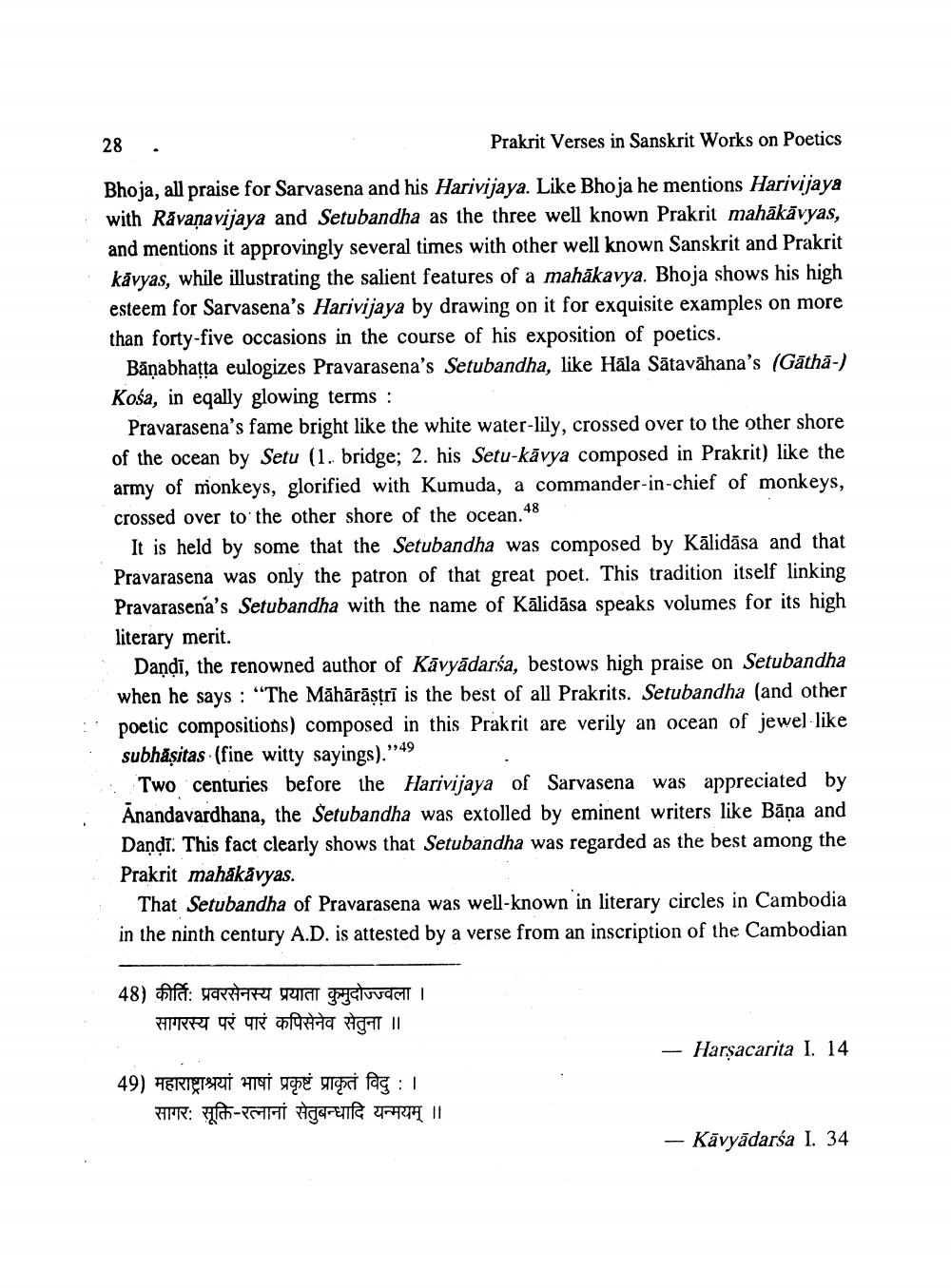________________
28
.
Prakrit Verses in Sanskrit Works on Poetics
Bhoja, all praise for Sarvasena and his Harivijaya. Like Bhoja he mentions Harivijaya with Rāvanavijaya and Setubandha as the three well known Prakrit mahākāvyas, and mentions it approvingly several times with other well known Sanskrit and Prakrit kavyas, while illustrating the salient features of a mahākavya. Bhoja shows his high esteem for Sarvasena's Harivijaya by drawing on it for exquisite examples on more than forty-five occasions in the course of his exposition of poetics.
Bāṇabhatta eulogizes Pravarasena's Setubandha, like Hāla Sātavāhana's (Gātrā-) Kośa, in eqally glowing terms :
Pravarasena's fame bright like the white water-lily, crossed over to the other shore of the ocean by Setu (1. bridge; 2. his Setu-kāvya composed in Prakrit) like the army of monkeys, glorified with Kumuda, a commander-in-chief of monkeys, crossed over to the other shore of the ocean.48
It is held by some that the Setubandha was composed by Kālidāsa and that Pravarasena was only the patron of that great poet. This tradition itself linking Pravarasena's Setubandha with the name of Kālidāsa speaks volumes for its high literary merit.
Dandī, the renowned author of Kāvyādarśa, bestows high praise on Setubandha when he says: "The Māhārāstrī is the best of all Prakrits. Setubandha (and other poetic compositions) composed in this Prakrit are verily an ocean of jewel-like subhāşitas (fine witty sayings)."49
Two centuries before the Harivijaya of Sarvasena was appreciated by Anandavardhana, the Setubandha was extolled by eminent writers like Bāņa and Dandi. This fact clearly shows that Setubandha was regarded as the best among the Prakrit mahakavyas.
That Setubandha of Pravarasena was well-known in literary circles in Cambodia in the ninth century A.D. is attested by a verse from an inscription of the Cambodian
48) Silat: USTRE SUA ietuvaat
सागरस्य परं पारं कपिसेनेव सेतना ॥
– Harşacarita I. 14
49) HERTETSRAİ HUNİ YEDE ulgoci fag: 1
सागरः सूक्ति-रत्नानां सेतुबन्धादि यन्मयम् ||
- Kāryādarśa I. 34




